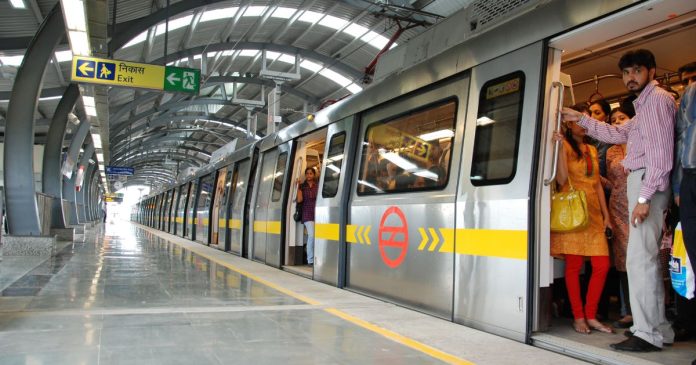Public transport has long been an essential aspect of urban mobility across the globe. It provides a convenient and cost-effective mode of transport for people to move from one place to another in cities, thereby reducing traffic congestion, air pollution, and carbon emissions. However, there are two major issues that often hinder the widespread use of public transport in cities: affordability and sustainability.
Affordability is one of the biggest challenges in public transport. The cost of public transport must be low enough for people to be able to use it regularly. High ticket prices and lack of affordable options can result in a decline in the use of public transport and an increase in private vehicles on the road. For low-income people, public transport can be the only viable option, and as such, it is essential that it remains accessible and affordable to them. Governments and public transport authorities must ensure that the fares remain within reach of everyone, and special concessions and subsidies are provided for those in need.
Another significant challenge in public transport is sustainability. Public transport systems that run on fossil fuels are a significant contributor to greenhouse gas emissions, which has a harmful impact on the environment and public health. To make public transport more sustainable, cities need to move towards low-emission alternatives such as electric buses, hybrid buses, and trams. Many cities around the world have already started implementing such alternatives, resulting in cleaner and greener public transport systems.
Furthermore, in addition to low-emission alternatives, cities must also focus on developing a comprehensive network that provides connectivity to all areas of the city. This means ensuring that public transport is accessible to all, including people with disabilities, senior citizens, and children. The provision of cycle lanes, walkways, and other alternative modes of transport can also play a crucial role in improving the overall sustainability of public transport.
Finally, to encourage the use of public transport, it is crucial to ensure that the system is efficient and reliable. Commuters need to be able to rely on the public transport system to get them to their destination on time. The system should be well-maintained, with regular and predictable schedules, and passengers should have access to real-time information about the routes and schedules. In addition, safety and security measures, such as CCTV cameras and emergency response teams, must be put in place to ensure the safety of commuters.
In conclusion, making public transport affordable and sustainable is vital for the mobility of people in urban areas. To achieve this goal, cities need to ensure that public transport is accessible to all, environmentally friendly, efficient, and reliable. By doing so, public transport can become the preferred mode of transport, resulting in a reduction in traffic congestion, air pollution, and carbon emissions, and ultimately contributing to the creation of healthier, more livable cities.
Urban & Social Mobility In India
Urbanization is rapidly transforming India, with more and more people moving to cities in search of better opportunities and a higher standard of living. The process of urbanization is a complex one, with multiple challenges and opportunities. One key area of focus in this regard is the issue of urban and social mobility.
Urban mobility refers to the ability of people to move freely and easily around cities, while social mobility refers to the ability of people to move up or down the socioeconomic ladder. Both these types of mobility are critical to the success of India’s urbanization process, as they enable people to access jobs, education, healthcare, and other services that are vital for their well-being.
However, the reality is that urban and social mobility in India is far from ideal. The country’s cities are often characterized by congested roads, inadequate public transport, and poor infrastructure, all of which contribute to low levels of urban mobility. In addition, there are significant inequalities in access to services and opportunities, which hinder social mobility for many people, particularly those from disadvantaged backgrounds.
The challenges of urban and social mobility are particularly acute for women, who often face multiple barriers to movement and participation in urban life. These include safety concerns, limited access to public transport, and social norms that restrict their mobility and agency. Addressing these challenges requires a holistic approach that takes into account the unique needs and experiences of different groups in society.
There are many potential solutions to the challenges of urban and social mobility in India. These range from investments in public transport and infrastructure, to policies that promote sustainable urban development and more equitable access to services and opportunities. For example, initiatives such as the Smart Cities Mission and the Atal Mission for Rejuvenation and Urban Transformation (AMRUT) are aimed at improving urban infrastructure and services, while the Pradhan Mantri Awas Yojana (PMAY) seeks to provide affordable housing for all.
In addition, there is a growing recognition of the importance of sustainable urban development, which prioritizes the needs of people and the environment over short-term economic gains. This approach involves a shift away from car-centric planning and towards more sustainable modes of transport, such as walking, cycling, and public transport. By making cities more livable and accessible, sustainable urban development can help to improve both urban and social mobility in India.
Overall, the issue of urban and social mobility is a complex one that requires a multifaceted response. By investing in public transport, infrastructure, and sustainable development, and by taking into account the unique needs and experiences of different groups in society, India can create more inclusive, equitable, and sustainable cities that enable people to move freely and participate fully in urban life.
















